When you hear the word disciple, what do you think of? Probably the 12 apostles, maybe some of the greater crowd following Jesus in the gospels. A few readers may perhaps picture Mary Magdalene. But overall, our image of the disciples is of a group of men sharing Jesus’ life and listening to his teachings.
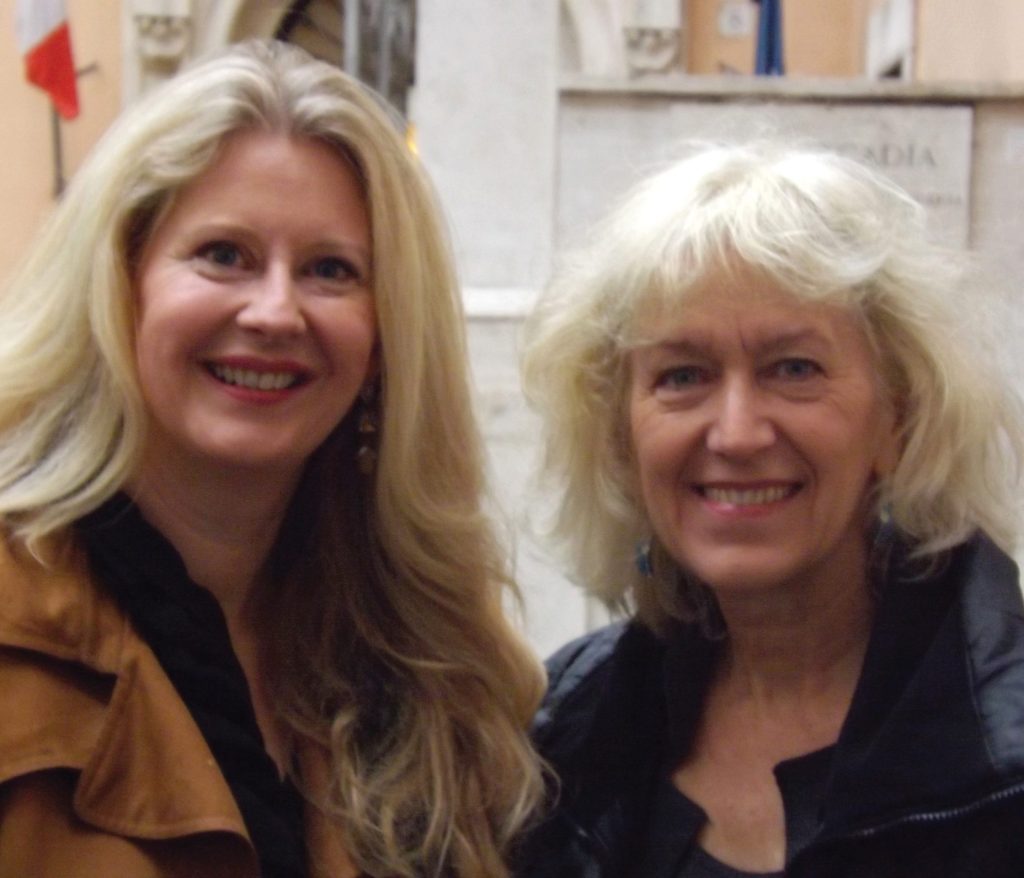
Image: Courtesy of Joan Taylor
Joan Taylor and Helen Bond, both professors of Christian origins, decided to challenge this dominant picture of who the disciples were and what they looked like. “When I Googled Jesus’ disciples, every single picture was of 12 men following along after Jesus,” Bond says. “Every now and then you get a stray woman, kind of like Maid Marian in pictures of Robin Hood. That’s clearly Mary Magdalene, but the only two women people tend to know about are Mary Magdalene and Mary the mother of Jesus.”
Instead, Taylor and Bond say that there were just as many women as men in this group. Indeed, it would have been impossible for the gospel to spread as far as it did otherwise.
In 2018 the pair sought to spread awareness of women’s roles in the early church through the BBC documentary Jesus’ Female Disciples. They traveled to Jordan, Israel, and Italy and talked to scriptural scholars, art historians, and other experts as they retraced the steps of Jesus’ female disciples.
It was on this journey that the seeds of their new book, Women Remembered (Hachette), were born. In the preface, Taylor and Bond describe their travels, writing, “We were constantly debating between ourselves, chatting as we drove in the hired car, imagining the lives of the women who travelled with Jesus. . . . In the intensity and troubles of travels, in the camaraderie and crises, standing in the locations where those early spreaders of Jesus’ message stood, we got some clearer glimpses of what it was like for Jesus’ first female disciples.”
We’re used to seeing depictions of the Last Supper that show 12 male disciples and Jesus. Would this have been an accurate representation of what a Passover in Jesus’ day actually looked like?
Joan Taylor: A Passover meal was for the whole family—it still is. Everyone is supposed to sit and remember the Passover. The idea that during this particular Passover meal Jesus only counted a group of 12 men as his real family is simply historically inaccurate.
There are instances in the gospels where Jesus turns to his disciples and talks about them as his brothers, sisters, and mother. This suggests that women are there. In fact, if you look carefully at the gospels—particularly Mark, Luke, and John—these indicate that women are in the room, but they’re not highlighted. The spotlight is shone on the men. Then what happens is that when you read these passages, they direct the reader to think, “Oh, the only people who are important are the men.” And that’s who we see in our imaginations. The women just get airbrushed out.
Can you give an example of a gospel passage where the women have been “airbrushed out”?
Helen Bond: One important point we make in our book is that translation is really important: You want an inclusive translation. Particularly, the Greek word anthropos means “people.” It doesn’t mean “men”—there’s a separate word for that. So when Jesus commissions the first disciples, while older translations may say he says, “I will make you fishers of men,” a better translation is, “I will make you fishers of people.”
There are all kinds of smaller examples in the Bible too. For example, where older translations might have Jesus say, “If any man would come after me,” nowadays a more inclusive translation would be, “If anyone.” That is actually much more accurate, because Greek has gendered grammar: If you have a mixed group of men and women, you’ll always use the male pronouns. That subtly or not so subtly hides any women.
Really what we want people to do is to start thinking in every case, “Could there have been women here and is there a good reason why we should exclude them?” If there’s not, then I think we always should include them.
In the Gospel of Mark, the only time women are mentioned explicitly is during the crucifixion. Why do you think the author of Mark left women out of his gospel until the very end?
Taylor: Mark mentions women who came up with Jesus from Galilee. In Galilee, they used to follow and minister, serve, or support him—depending on how we translate that word. Mark says they were there in Galilee: That indicates there’s a backstory to the women, and we have to imagine they’re there in the rest of the gospel, as Helen said, even if they’re not explicitly mentioned.
We think that perhaps Mark left out the women for an apologetic reason. The early church was egalitarian: It wasn’t invested in societal patriarchy because all societal structures were going to be overturned. The world order would pass away when the kingdom of God was revealed. So perhaps Mark was reacting to how Christians were characterized. The pagan philosopher Celsus, for example, dismissed Christians as a bunch of beggars and women. He said they convinced people in the marketplace of their ideas or went off to the women’s quarters to disperse their complete rubbish. If you’ve got Christianity described as being led by women and want to push back against that, then you concentrate on the men in your storytelling of the gospel: “We’ve got strong men too. The men are in charge, like you would expect.” That becomes a reason for shining the light on the men.
It’s not uncommon to hear that surely there were women around the disciples—they were cooking, cleaning, and supporting the work of Jesus and the male disciples. Is this an accurate depiction of what the women would have been doing?
Bond: We don’t know. You have to use your imagination or your knowledge of history to fill this gap. As Joan mentioned, there’s this word “to minister.” If we read that a man is ministering, we assume he’s doing something like preaching or leading prayer or being in charge of a mission. But when it’s used about women, we might assume that ministering means that she’s making tea, helping, or being in a very subordinate role. I think one problem is in how we’ve interpreted this word over the years.
But we certainly know from Paul’s letters—so very, very soon after the time of Jesus—that women were in quite major leadership roles. Women are described as apostles, teachers, and deacons. Phoebe is called a deacon of the church at Cenchrea, and Paul says that she’s a benefactor of men, including himself. She seems to have a leading role—she’s not just making tea in this church.
The gospels mention Jesus sending out the 12 in pairs. Do you think that meant six groups of two men each or could it be interpreted differently?
Taylor: For one, we’ve got to address the category of the 12. The number suggests the 12 tribes of Israel, which are named in accordance with 12 men but are the entire community. In the gospels, you have lists of 12 men, but they’re weirdly unstable lists: It’s not always the same 12. Who was Nathanael in the Gospel of John? Certainly the 12 are associated with the role of the apostles, people who are sent out as envoys, but are the apostles always the same as the 12?
That language of two by two also has quite a strong association with the language of Noah’s ark. In that story, they were male-female pairs. If that’s the case—because we are thinking in terms of hidden women who are always in the room—then does that phrase indicate that the apostles were sent out in male-female pairs to spread the word around Galilee?
That would certainly have been the most effective way of spreading the word in a society where life was very gendered and it was simply inappropriate, really, for a man to talk to a woman. On the flip side, a woman out in the open talking to a man would have laid her open to charges of immodesty or impropriety. Women would have needed to talk to other women to spread the good news: It simply could not have worked in any other way.
What does Acts of the Apostles say about female disciples?
Bond: Acts mentions this woman Prisca, or Priscilla, who moves around the Mediterranean from city to city with her husband. The really interesting thing about her is that Luke mentions her name first—before her husband’s. The pair is always referred to as Prisca and Aquila. That might not be interesting to us, but in the first century to say the woman’s name before the man’s really suggests that she is the primary one of the pair.
It seems as if the pair moves from city to city and does the initial work of preparing the community. They are tentmakers, so they come in, set up shop, start some kind of Christian fellowship, and start to get some people meeting. Then Paul comes in and starts his mission. And then Prisca and Aquila go somewhere else and start again. In fact, we see this happen three times, which suggests a very specific missionary strategy.
Prisca actually teaches a very learned Jew named Apollos from Alexandria. He seems to be quite a high-status man. He’s very learned and a follower of John the Baptist. But he doesn’t seem to know much about Jesus, so he needs a bit of extra instruction. And it’s Prisca who gets the job of teaching him.
Again, this is really unusual in an ancient context. Everything we know about Prisca suggests she’s a woman of low status. She’s a tentmaker and probably uneducated. But there she is teaching this high-status, educated Alexandrian man, and it all seems to work out. The next thing we know, Apollos is off in Corinth starting his own Christian groups and well on his way to becoming a Christian missionary.
What do we know about the lives of women in Jesus’ time?
Taylor: It really depended on your social class. If you were an elite woman, you could have considerable influence: You could be sort of an honorary man. For the business class—traders, tentmakers, shopkeepers, etc.—women were involved in the business and clearly very active. We see them on stone reliefs in butcher’s shops doing all these things. Women in villages were involved in agricultural labor and in the family businesses.
But we also know that there were social constraints in terms of what women were supposed to do. There was an idea of the public space of authority in a city being in the hands of men—this was very ingrained throughout the Roman and Greek worlds. Women’s space was ultimately more domestic and men’s was more out in the public realm. Women had to guard their modesty: They could be called prostitutes if they did things that were considered unseemly, and their husbands could divorce them. Women were more vulnerable in this world.
You mentioned that women who broke the mold of what was considered appropriate behavior could be called prostitutes or immoral. What might their contemporaries have thought of the women following Jesus in this case?
Bond: That’s something we thought about quite a lot. One strange thing in the gospels is that there’s not more negativity toward Jesus and this mixed band of disciples. Part of that might be because a lot of the women were related to the male disciples, and people would have been familiar with large caravans of people on the road in Israel.
But every now and then, it’s suggested that people were saying things about Jesus’ associates. There’s the idea that Jesus associates with tax collectors and sinners. John the Baptist is accused of fraternizing with harlots. I think these may be echoes of some slurs that people were casting against the women traveling with him.
I do think there’s probably some negativity there that the gospel writers obviously would not have wanted to foreground, because it’s not to their advantage at all.
How did ideas about women change throughout the time the Christian scriptures were being written and compiled?
Taylor: Art historian Ally Kateusz pointed out this interesting phenomenon to us—the incredible disappearing women of the sarcophagi. A third-century sarcophagus in the Vatican’s Pio Cristiano Museum shows a short-haired, bearded Jesus at the tomb of Lazarus. Mary and Martha are the same size as Jesus and another male disciple, and they’re all standing together. Everyone in the group has the same importance, even Jesus. Jesus doesn’t have a halo. He’s standing there with his friends.
Then, in the fourth century, depictions of the same scene show only one woman. She’s bending over, sort of more submissive, and veiled. Over time, this woman gets more and more submissive, smaller and smaller. By the end of the fourth century, some depictions of the kneeling woman—who’s probably Mary—show her as just a tiny, minute footstool. There’s one sarcophagus where the cock crowing on Peter’s betrayal is larger than the woman.
This is important because the major manuscripts of the Christian scriptures, the ones valued most, come from the same century when women were, in visual art terms, getting covered up, shunted into a corner, and reduced in size. It does really feed the sense that we have to read scripture with a hermeneutic of suspicion and be alert to any editorial changes that might have taken place in the fourth century.
Can you give an example?
Bond: Probably one of the most obvious is 1 Corinthians 14:34. In Chapter 11, Paul talks about women prophesying, and he’s quite happy for them to prophesy, presumably within the Christian congregation. He says, “The only thing is to keep your heads covered.”
Then you get to Chapter 14, and suddenly you get this strange message: “I permit no women to teach. Women are to remain silent.” It just does not match what he said a couple chapters before. People have turned over and over in acrobatics trying to work out why his mind changes. Is it a different day? A different situation? By far the easiest explanation is that these two little verses are later additions to the text.
When we filmed the documentary that preceded our book, we talked to a scholar, Philip B. Payne, who had done a lot of work on some of the very early manuscripts of the Christian scriptures. He told us that often certain symbols in the margins indicate that bits of texts weren’t necessarily in all of the existing versions. And these marks appear in 1 Corinthians 14. They are also placed in slightly different places in different manuscripts, which is very frequently a sign that they are an interpolation.
Probably what happened was that somebody wrote a little note in the margin—“I don’t permit any woman to speak”—and then as this manuscript was copied by hand again and again, the next time somebody came along they saw this bit and thought, “Is that part of the text or not?” Probably originally they put in a few marks to indicate, “Well, I’m not sure about this bit,” but gradually it got copied and copied until it simply became part of the text.
Things like that verse are probably not from Paul. It’s still part of scripture, but it’s not from Paul and probably from a later date, like Joan said, when women’s activities were being curbed.
What happened between Jesus’ time and the fourth century? When did Christian leadership become the exclusive purview of men?
Taylor: That’s a really big question. There’s an enormous amount of diversity in early Christianity, so some groups were super egalitarian and even had female leaders. But other groups of Christians in which men had authority were much more accommodating to wider society.
In the fourth century, Emperor Constantine wanted to take over, sort out the church, and streamline Christianity. He held the Council of Nicaea in 325. He was very heavy-handed in terms of his involvement with the church. The type of Christianity he was familiar with from the Roman army was not particularly a type that was friendly toward women’s leadership. And it is this type of Christianity that becomes considered theologically orthodox.
That said, even through the fifth century and beyond there were still women in leadership positions. We can see them in art and inscriptions. They’ve been forgotten about in mainstream written history, but archaeology has brought these images to light.
Can you give an example?
Bond: A beautiful example that we finish the book with is a sixth-century bishop named Cerula. There’s a reconstructed portrait of her that was found in a catacomb in Naples, Italy. It shows a woman wearing vestments that are apparently what a bishop would wear. She’s raising her hands in prayer, and behind her are representations of the gospels with tongues of fire coming out and a lot of other iconography that suggests she’s a bishop.
People have found things like this before, but they’ve never been in great condition. It was easy to say, “Oh, well, this is just a feminine looking man,” or “This isn’t really a bishop, it’s some sort of helpful woman.” But in this case we have all this clear iconography and we have her name, Cerula. There’s no doubt about her being female.
The now restored image is a beautiful portrait of a woman who clearly was leading a congregation in the sixth century. This is after creeds and councils said that ministers ought to be men. That these creeds and councils say, “This is how things ought to be,” I suppose, indicates that out in the real world, that’s actually not how things are.
Why is it so important that we remember these women?
Taylor: Interpolations of Paul, of 1 Corinthians 14:34 or the later pastoral epistles such as 1 Timothy, give the idea that Christianity was a male religion right from the start. It was kind of this band of merry men with Jesus, and there are no women at all except for his grieving mother and the longing Mary Magdalene, who seems to have fallen in love with him. This undermines any model of Christianity where women have important leadership roles or important parts to play in Christian communities.
Rather than taking the Christian message as a liberating and largely countercultural one, what the church has weirdly done is replicate the patriarchy of the Greco-Roman world as an essential part of the Christian message. Our book really pushes against that: That’s not an essential part of Christianity.
Bond: I think churches have moved a long way from the egalitarian ideal and the social justice of the message in a gospel such as Luke. I think reclaiming something of that original passion and impetus would be a good thing for most Christian churches.
But I think even beyond that, it speaks to wider society. That picture of Jesus and the Last Supper is not just about a church meeting. It’s also about the boardroom in so many of today’s big industries. I think reinstating the women, seeing that both men and women have things to contribute, and reclaiming some of that original passion would be good things for society in general.
This article also appears in the October 2022 issue of U.S. Catholic (Vol. 87, No. 10, pages 20-25). Click here to subscribe to the magazine.
Image: Flickr/frted (CC BY-NC 2.0)


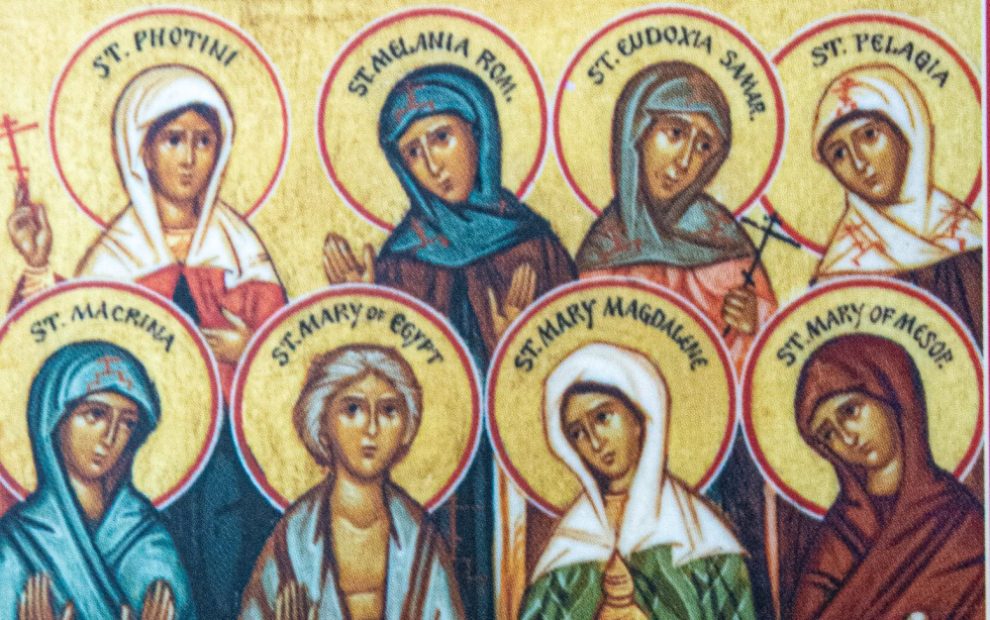


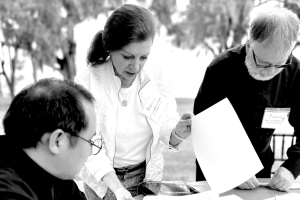
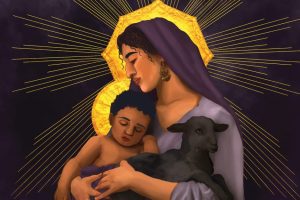






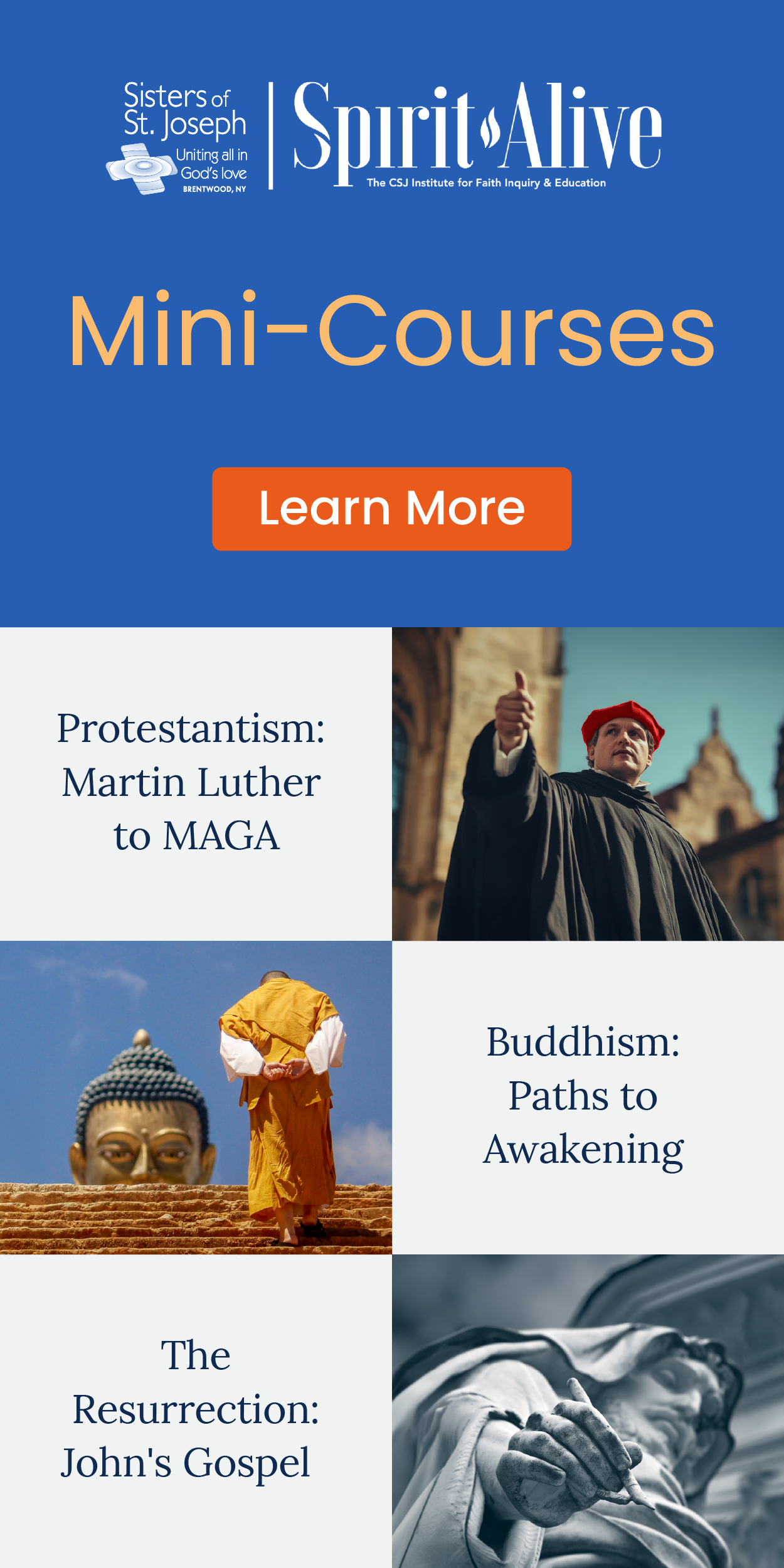
Add comment